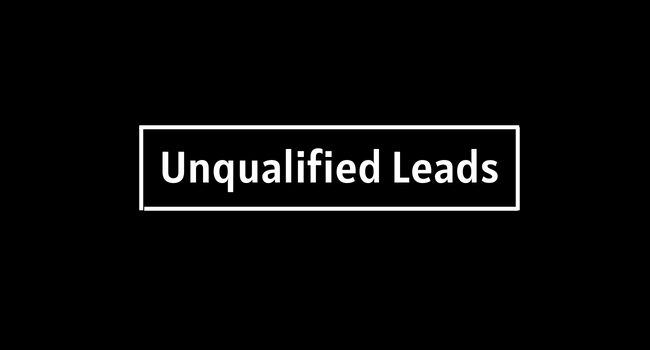
Sales lead generation can be challenging enough, especially if you have a small team of employees. However, this scenario becomes even more difficult if your sales pipeline is overflowing with low-quality or unfit leads.
Consistently obtaining the correct quantity of quality prospects ranks is one of the most challenging tasks for B2B marketers. Yet, many businesses still lack the necessary procedures to progress in this area.
Several businesses strive to generate as many leads as possible, but quantity does not equate to quality. There is a minimal chance that prospects who aren’t suitable fits for your product or service will ever convert.
You might need a better sales lead generation strategy if you have many unqualified leads in your sales pipeline. So, what to do with them?
Let’s discuss what you can do to handle leads that still need to become qualified ones.
How Do Unqualified Leads Differ From Qualified Leads?
Sales leads can be divided into two groups: qualified and unqualified. While nurturing prospects, leads can change from one category to another. Here are some criteria for how we commonly differ between qualified and unqualified leads.
Qualified leads
- They have gone through your nurturing campaign or are in the process.
- They are in charge of their purchasing cycles.
- They have compiled a list of their precise demands and needs.
- They have a realistic budget and are looking for solutions that fit inside it.
Unqualified leads
- They need to receive more nurturing to complete their sales cycle.
- They need to be sure about the products or services your business provides.
- They need a clear idea about what they want in a solution.
- They can’t afford your offer because of the restricted budget.
What To Do With Unqualified Leads
For your business, unqualified leads are terrible news. So, how can one deal with them? Let’s find out!
1. Speak the truth while maintaining professionalism
You don’t want to waste your time, and neither does your prospect, by doing something that isn’t beneficial for both parties. So, be honest with them and speak the truth, yet avoid becoming stern.
Ensure that whatever you do or say reflects your professionalism. Always express gratitude for their time, and don’t hesitate to be upfront and sincere with them.
Next, point out the deal’s flaws and how they could hurt both sides. Finally, it makes room for recommendations and projects in the future.
2. Recommend them to someone in your referral network
When talking about recommendations, you must know that referral networking is a survival skill in business. So, don’t just click them out of sight and throw them away!
Instead, try sending the unqualified leads to someone more suited to them. The referral network includes companies that serve your clientele but aren’t direct rivals.
3. Don’t try to qualify them when they are a terrible fit
One of the prominent issues in B2B sales is that reps occasionally attempt to continue moving a lead through the sales funnel despite these red flags to reach their targets.
This kind of situation is common in small businesses, in particular. Because they have so few prospects to chase, they panic and add leads to their pipeline that need a better match.
Because qualified leads are considerably more likely to convert, quality should always come before quantity. Therefore, only pursue qualified leads with almost zero chance of becoming qualified ones.
4. Set up a drip campaign for them
Unqualified leads could be a cost today but might be potential clients in the future. For instance, while their budget may not be satisfactory at the moment, or they are not an admirer of your products/services, it appears to promise for the future.
Because conditions can change, drip campaigns are the most effective way to keep such leads in the pipeline for the long term. This automated procedure helps nurture the relationship you started developing with the prospect until things are favorable for both parties.
It is not always possible to find sales-ready, qualified leads. Be prepared to deal with unqualified leads by being an expert at correct prospecting, providing and receiving accurate information, and using the right tools.
Also, to avoid having a pile of unqualified leads, research thoroughly and qualify them before contacting potential customers.
